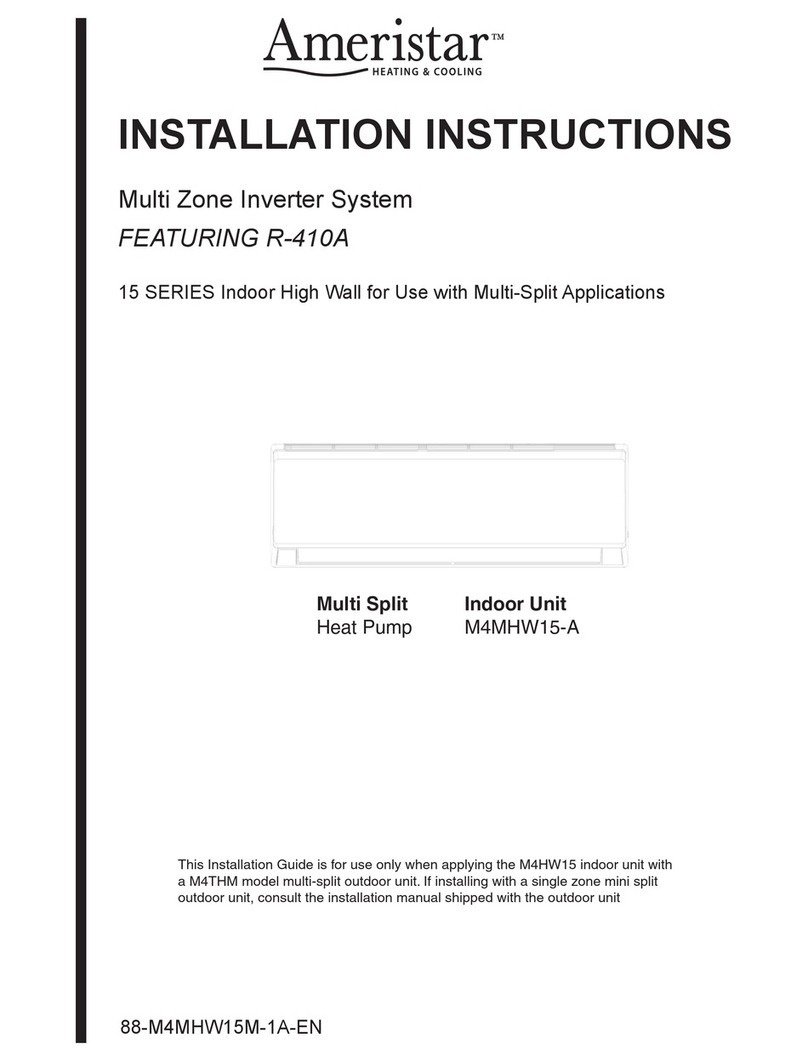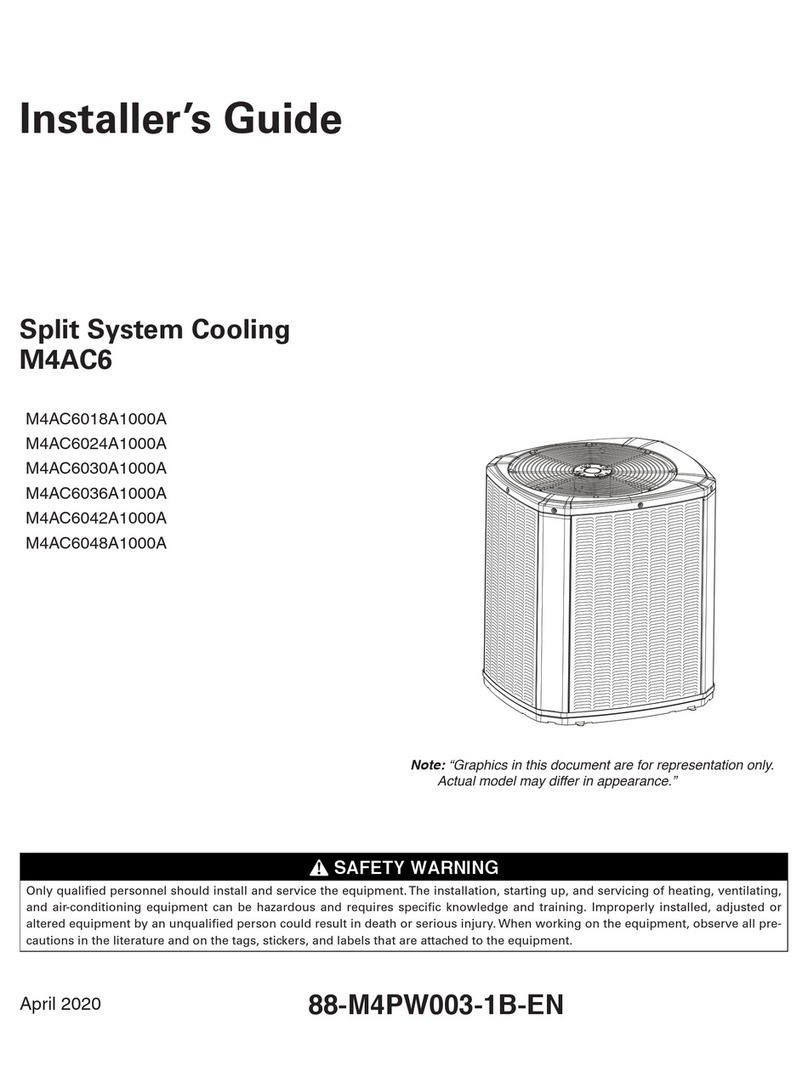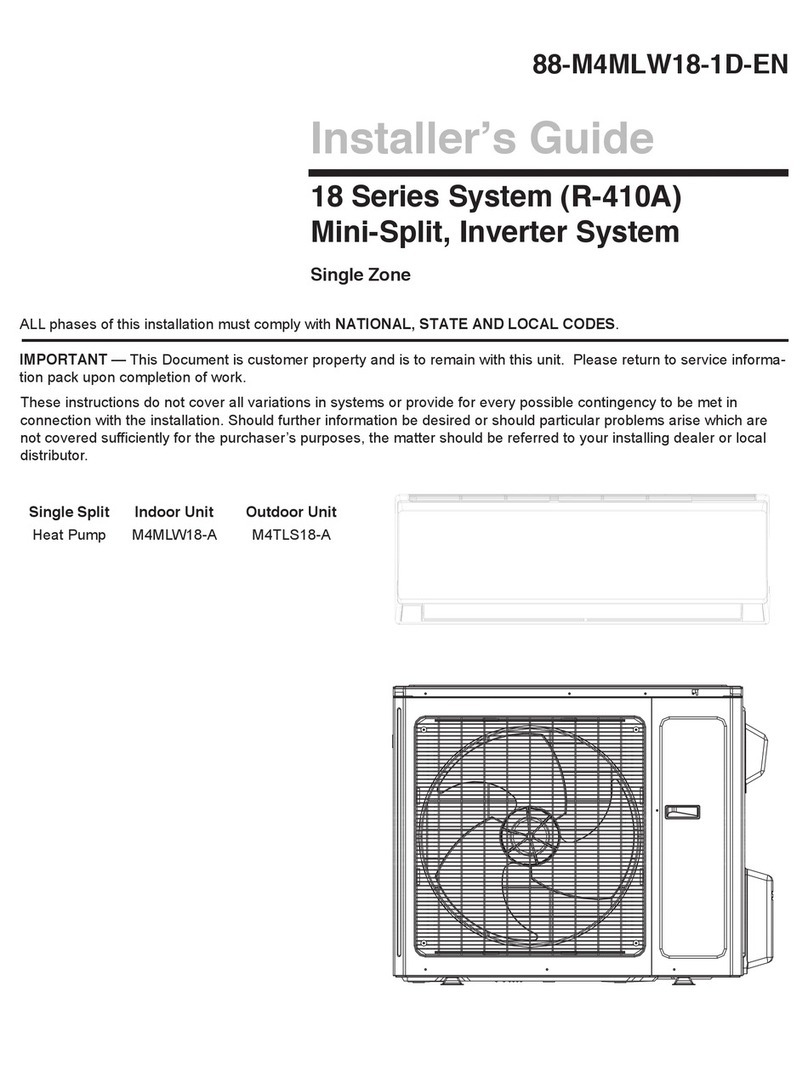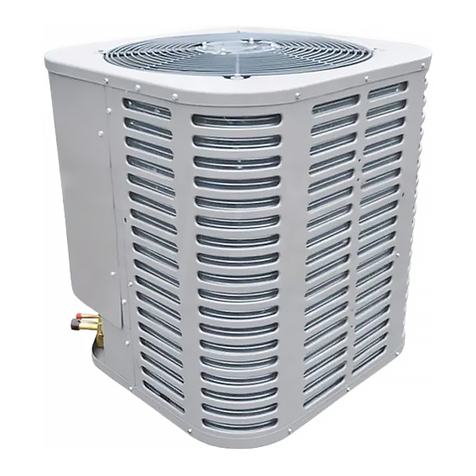
Contents
Safety Precautions .................................................................................................................... 5
Pre-Installation Checklist........................................................................................................... 6
Items Shipped With the System ................................................................................................ 7
Necessary Tools ........................................................................................................................ 7
Typical Installation Setup........................................................................................................... 8
Names and Functions of Each Part........................................................................................... 8
Clearance Requirements........................................................................................................... 9
Connection Pipe Requirements............................................................................................... 10
Refrigerant Piping Precautions................................................................................................ 11
Nitrogen Purging While Brazing .............................................................................................. 11
Installation Location................................................................................................................. 12
Installing the Indoor Unit.......................................................................................................... 13
Mounting Location ................................................................................................................... 13
Drilling the Piping Hole ............................................................................................................ 14
Refrigerant Piping at the Indoor Unit ....................................................................................... 15
Installing the Condensate Pipe................................................................................................ 17
Wiring at the Indoor Unit.......................................................................................................... 17
Binding the Pipes and Cables ................................................................................................. 19
Hanging the Indoor Unit........................................................................................................... 19
Installing the Outdoor Unit....................................................................................................... 20
Condensate Management of the Outdoor Unit........................................................................ 20
Installing the Refrigerant Piping............................................................................................... 21
Flaring Process and Bending Pipes ........................................................................................ 21
Refrigerant Piping at the Outdoor Unit .................................................................................... 22
Insulating the Refrigerant Piping and Connections ................................................................. 22
Piping Requirements ............................................................................................................... 23
Vacuum and Refrigerant Leakage Detection........................................................................... 24
Wiring Precautions .................................................................................................................. 25
Outdoor Wiring Connections ................................................................................................... 25
Stranded Wiring Connections.................................................................................................. 26
Electrical Connections............................................................................................................. 27
Power Supply Wiring ............................................................................................................... 28
Cable Specications and Grounding Requirements................................................................ 28
Installation of Controllers......................................................................................................... 28
Post Installation Checklist........................................................................................................ 29
Test Operation ......................................................................................................................... 29
Refrigerant System Diagrams ................................................................................................. 30
Wiring Diagrams...................................................................................................................... 31
Unit Dimensions ...................................................................................................................... 34
Common Error Codes............................................................................................................. 37
Troubleshooting....................................................................................................................... 38
Auxillary Operation .................................................................................................................. 39
Indoor Unit Maintenance ......................................................................................................... 39
General Maintenance .............................................................................................................. 40

































